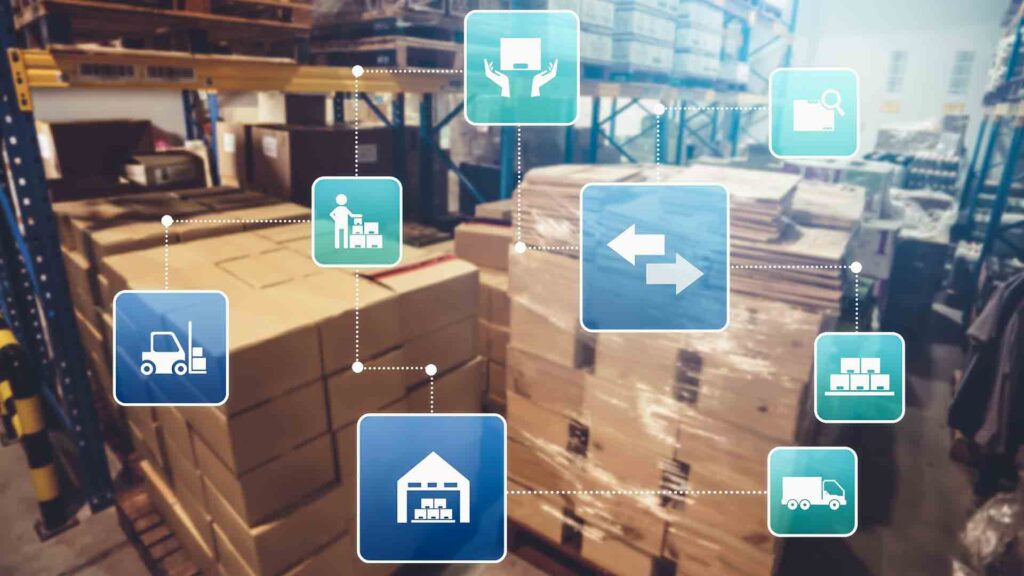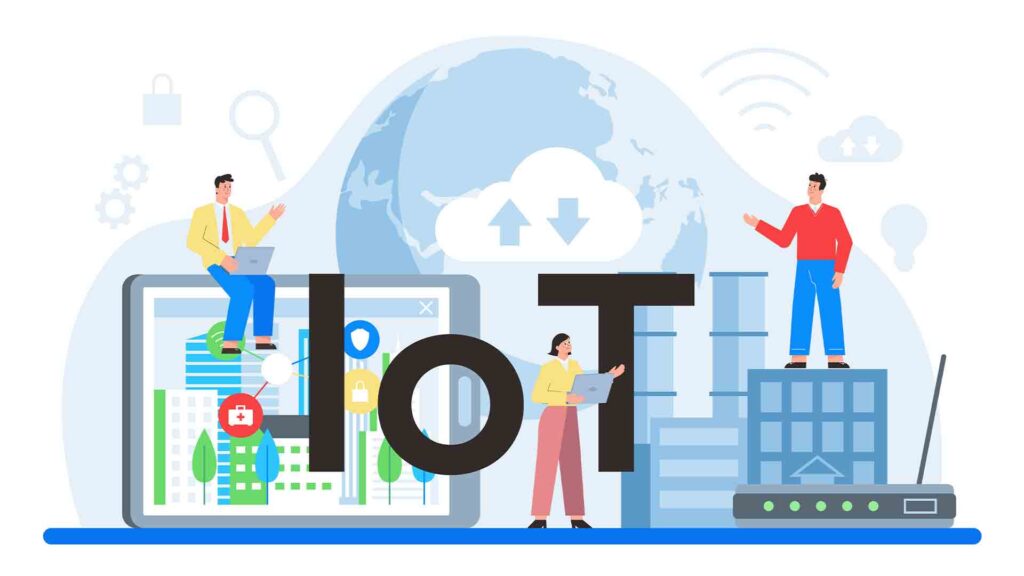The logistics industry, with its intricate web of processes, has embraced technological innovations to enhance efficiency, reduce costs, and improve overall performance. One such transformative technology making waves in logistics is the Internet of Things (IoT). In this blog, we delve into the application of IoT in logistics, exploring how connected devices are reshaping the industry landscape.
Understanding IoT in Logistics

The Internet of Things (IoT) refers to the network of interconnected devices that communicate and exchange data. In logistics, this means embedding sensors, actuators, and other smart devices into various elements of the supply chain, from vehicles to warehouses.
Key Applications of IoT in Logistics:

The integration of the Internet of Things (IoT) in logistics is transforming traditional supply chain operations. IoT leverages connected devices and sensors to gather, transmit, and analyze real-time data, providing valuable insights and enhancing efficiency across the logistics spectrum. Here are key applications of IoT in logistics:
1. Real-Time Asset Tracking:
– How it Works: IoT-enabled tracking devices are attached to shipments, containers, or individual products.
– Benefits: Real-time visibility into the location and condition of assets, reducing the risk of loss or theft. This enhances supply chain transparency and accountability.
2. Fleet Management:
– How it Works: IoT sensors in vehicles collect data on fuel consumption, route efficiency, and vehicle health.
– Benefits: Improved route optimization, reduced fuel costs, proactive maintenance, and enhanced overall fleet efficiency.
3. Condition Monitoring:
– How it Works: Sensors monitor environmental conditions such as temperature, humidity, and light.
– Benefits: Ensures that goods sensitive to environmental conditions, like pharmaceuticals or perishable goods, are transported within specified parameters. Reduces spoilage and ensures product integrity.
4. Predictive Maintenance:
– How it Works: IoT sensors monitor the condition of machinery and equipment in warehouses or during transit.
– Benefits: Predicts when equipment is likely to fail, allowing for proactive maintenance and minimizing downtime.
5. Inventory Management:
– How it Works: RFID tags and IoT sensors track the movement of inventory in real-time.
– Benefits: Reduced stockouts, accurate demand forecasting, and efficient inventory replenishment. This results in cost savings and improved customer satisfaction.
6. Smart Warehousing:
– How it Works: IoT devices in warehouses monitor the movement of goods, optimize storage, and automate inventory processes.
– Benefits: Increased operational efficiency, reduced errors, and faster order fulfillment.
7. Cold Chain Management:
– How it Works: IoT sensors monitor the temperature of refrigerated containers during the transportation of perishable goods.
– Benefits: Ensures compliance with temperature-sensitive regulations, reduces spoilage, and maintains the quality of products throughout the supply chain.
8. Supply Chain Visibility:
– How it Works: Integration of IoT data across the entire supply chain for end-to-end visibility.
– Benefits: Enhanced traceability, reduced lead times, and improved responsiveness to disruptions.
9. Improved Last-Mile Delivery:
– How it Works: IoT devices in delivery vehicles provide real-time data on traffic, weather, and delivery routes.
– Benefits: Faster and more efficient last-mile delivery, reduced delivery times, and enhanced customer satisfaction.
10. Enhanced Security:
– How it Works: IoT-enabled security systems monitor the movement and condition of goods during transit.
– Benefits: Mitigates the risk of theft, tampering, or damage to shipments, ensuring the security of valuable or sensitive goods.
Challenges and Considerations in Implementing IoT in Logistics

While the promise of IoT in logistics is immense, its implementation comes with its own set of challenges and considerations.
1. Data Security and Privacy:
– Challenge: The vast amount of data generated by IoT devices poses challenges related to security and privacy.
– Consideration: Implementing robust encryption and cybersecurity measures is crucial. Clear data governance policies and compliance with regulations ensure the responsible handling of sensitive information.
2. Interoperability:
– Challenge: Many logistics operations involve a mix of devices and systems from different manufacturers, leading to compatibility issues.
– Consideration: Standardization and adherence to common communication protocols can mitigate interoperability challenges. Choosing IoT solutions that are scalable and easily integrable is key.
3. Cost of Implementation:
– Challenge: Integrating IoT solutions can be capital-intensive, especially for smaller logistics players.
– Consideration: A phased implementation approach, starting with critical areas, can help manage costs. Additionally, the long-term benefits in terms of efficiency and cost savings often outweigh the initial investment.
4. Reliability of Connectivity:
– Challenge: In remote or challenging terrains, maintaining a reliable connection for IoT devices can be difficult.
– Consideration: Exploring alternative connectivity options, such as satellite or mesh networks, can help ensure a consistent and reliable connection.
5. Skills and Workforce Training:
– Challenge: The successful implementation of IoT requires a skilled workforce capable of managing and interpreting the data generated.
– Consideration: Providing training programs for existing staff and hiring professionals with expertise in IoT can bridge the skills gap. Collaborating with technology partners for training and support is also beneficial.
6. Scalability:
– Challenge: As logistics operations grow, the IoT infrastructure must be scalable to accommodate increased data and device volumes.
– Consideration: Choosing scalable IoT solutions and platforms that can grow alongside the business is essential. Regularly reviewing and upgrading the IoT ecosystem ensures it remains aligned with business needs.
7. Regulatory Compliance:
– Challenge: Different regions and industries have varying regulations concerning data privacy and IoT usage.
– Consideration: Staying informed about regional regulations and ensuring compliance with industry standards is crucial. Engaging legal counsel to navigate complex regulatory landscapes is advisable.
As logistics embraces the era of IoT, businesses must approach implementation strategically, addressing challenges and capitalizing on opportunities. The seamless integration of connected devices into logistics operations not only streamlines processes but also lays the foundation for a more responsive, agile, and intelligent supply chain.
The future of logistics lies in the hands of those who can harness the power of IoT to adapt, innovate, and stay ahead in an ever-evolving industry. At Galaxy Freight, we recognize the transformative potential of IoT in logistics. Our commitment to innovation is reflected in the strategic deployment of IoT technologies to optimize supply chain processes, ensuring efficiency, transparency, and reliability.
Partner with Galaxy Freight to embark on a journey towards a connected and agile logistics future. Contact us today to experience the Galaxy Freight advantage in navigating the complexities of modern supply chains.



